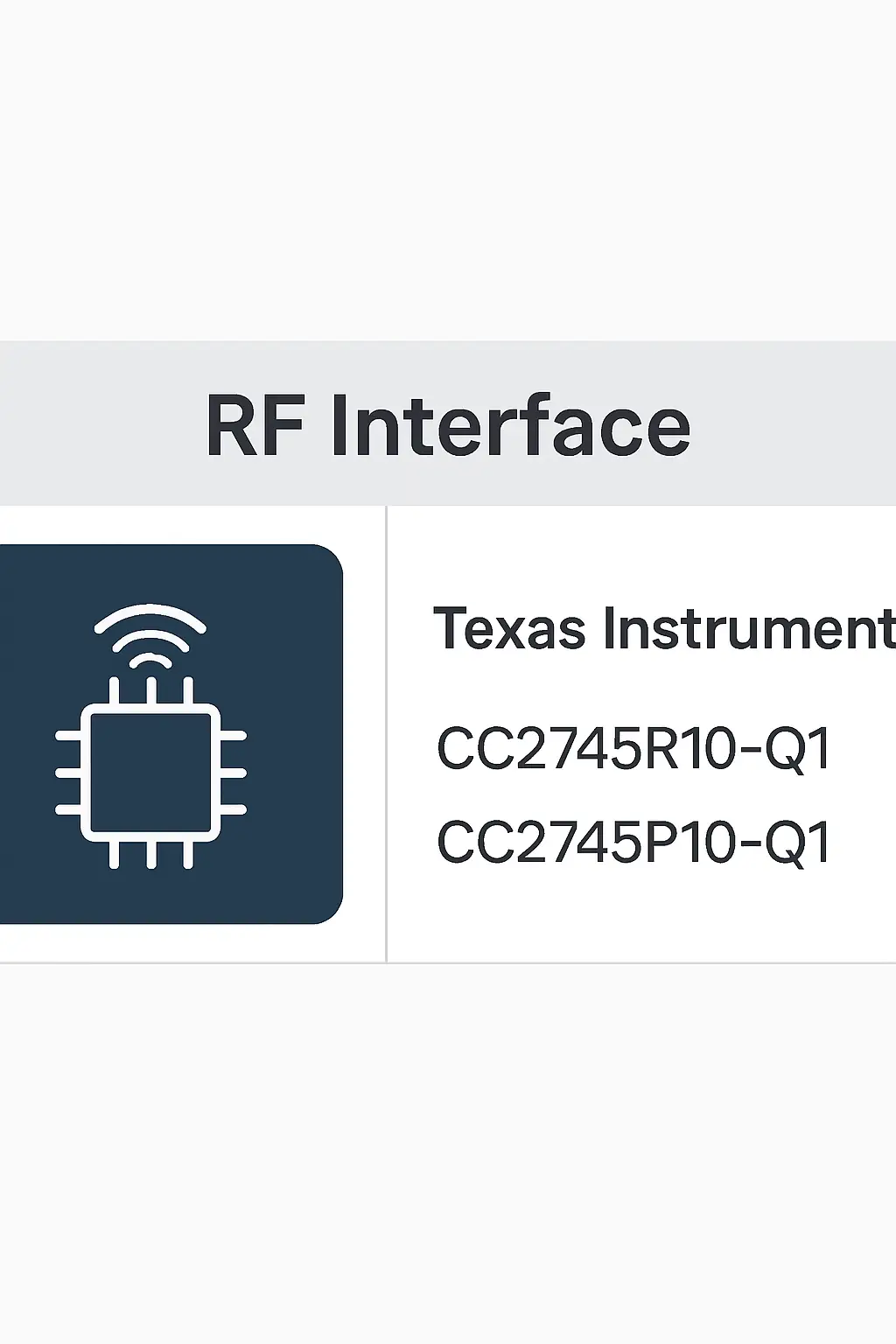RF Interface
The RF Interface in Automotive Electronics plays a crucial role in enabling wireless communication between the vehicle and external devices, such as key fobs, smart phones, or other automotive systems. It is an essential component of the Door Access and Immobilizer system, allowing for secure and convenient entry and ignition without the need for a physical key. This technology supports advanced features like keyless entry, remote start, and passive entry, enhancing both user experience and vehicle security.
Functional Safety & Security are integral to the design and implementation of the RF Interface, ensuring that the system operates reliably and protects against potential threats, such as signal spoofing or unauthorized access. The system adheres to industry standards like ISO 26262 and ISO 21434, guaranteeing robust performance under various environmental conditions.
In modern vehicles, the RF Interface is widely used in applications such as smart key systems, vehicle-to-vehicle (V2V) communication, and integration with mobile apps for remote control. It enables seamless connectivity, improves driver convenience, and supports the development of autonomous and connected vehicle technologies.
This advanced RF technology is a key enabler for future mobility solutions, offering a secure, reliable, and user-friendly way to interact with the vehicle. Its application spans across different vehicle models, from luxury cars to commercial vehicles, making it a vital part of the automotive electronics ecosystem.
Details
RF Interface

Related Parts
| Series Name | Description | Manufacturer Name | Attribute Description |
|---|---|---|---|
| Texas Instruments | 10µF, 4V, X5R, ±10%, 0402 ceramic capacitor, 50V rated, low ESR, suitable for decoupling and filtering in automotive applications. | ||
| Texas Instruments | 10Gb/s High-Speed Signal Conditioner, 1-channel, 50Ω input/output, 0.5Vpp differential I/O, operates from 2.5V to 3.3V supply, supports NRZ signaling, integrated CDR, 40-pin QFN package, designed for automotive applications. |








.png?x-oss-process=image/format,webp/resize,h_32)










